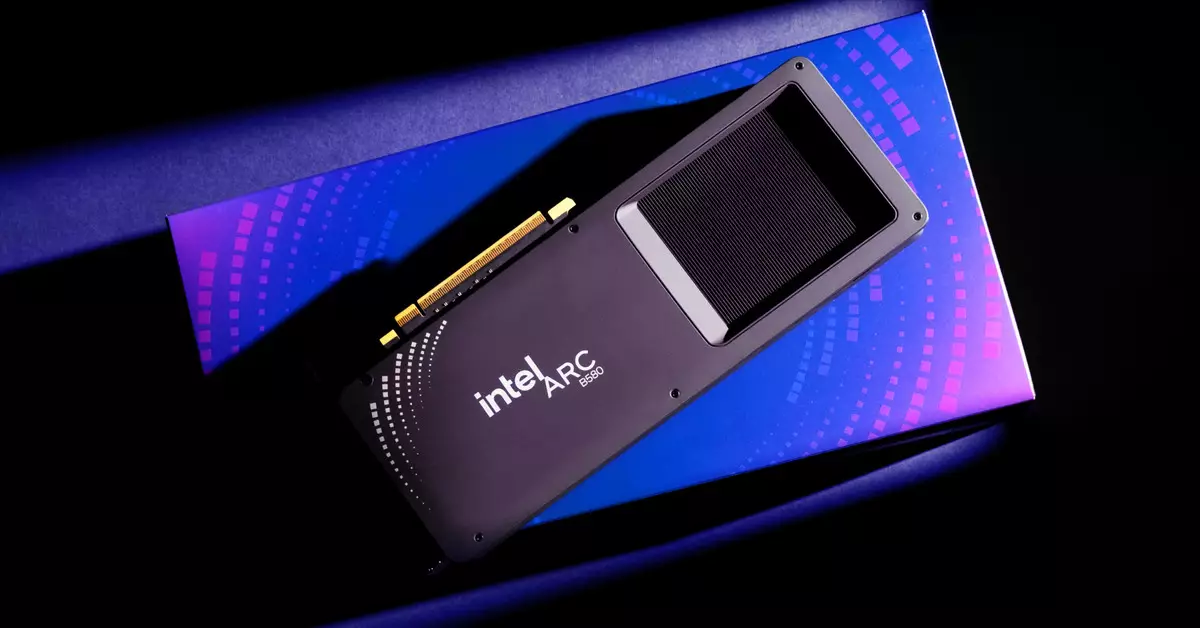In a year characterized by turbulence and challenges, Intel has finally launched its Arc B580 “Battlemage” GPU, a discrete graphics card that has garnered an overwhelming response from both consumers and critics alike. For a company that has struggled to establish a foothold in the competitive graphics card landscape dominated by giants like NVIDIA and AMD, the arrival of the Arc B580 signals a potential turning point. Not only is this GPU available at an appealing price point of $250, but it has also sold out rapidly, prompting discussions about its enduring popularity and influence in the market.
According to Mark Anthony Ramirez, Intel’s spokesperson, the initial waves of demand for the Arc B580 have led to most retailers running out of stock. The company is diligently working to replenish its inventory every week, indicating that Intel is aware of the strong market interest and is committed to keeping the supply flowing. This proactive approach demonstrates Intel’s dedication to addressing consumer desires and improving its standing in the graphics card segment.
However, the rapid sellout raises questions about the availability and accessibility of the B580 for the average gamer. As demand escalates, it becomes crucial for Intel to manage its supply chain efficiently to avoid leaving potential customers disappointed. The enthusiasm surrounding this GPU could dissipate if consumers are unable to purchase it at its intended price.
Performance Highlights and Industry Reception
Initial reviews of the Arc B580 have been predominantly positive, depicting it as a “glass of ice water in GPU hell.” This analogy underscores the stark contrast between Intel’s new offering and the underwhelming performance of competing cards such as the NVIDIA RTX 4060 and AMD RX 7600. Critics have noted that these older models have struggled to impress gamers, leading to a new era of criticism that the graphics card market has been stagnant.
Review platforms have featured headlines praising the B580, with notable endorsements from sources like Linus Tech Tips, which dubbed the RTX 4060 as a “wet fart of a GPU” while commending the B580 as both “great and affordable.” While it’s important to recognize that the B580 doesn’t outperform its competitors in every scenario—especially at 1080p resolution—its superior average performance and reasonable pricing are compelling points for potential buyers. Furthermore, reviewers have pointed out that the Arc B580’s drivers appear to be more mature and stable than those seen in earlier Intel graphics offerings, which further bolsters consumer confidence.
Intel’s strategy with the Arc B580 harnesses not only its competitive price point but also its generous allocation of 12GB of video RAM. This specification is particularly attractive to gamers who might prioritize performance without wanting to break the bank. However, as noted, AMD and NVIDIA are preparing to unveil their next-generation GPUs, which could present formidable competition for Intel’s fledgling product.
As the market braces for the launch of potential contenders from established brands, Intel needs to solidify its reputation and maintain consumer interest in the B580. The GPU landscape can change rapidly, and keeping the excitement alive for the Arc B580 will be paramount to its long-term success.
While Intel’s earlier forays into the discrete graphics card market might have fallen short, the Arc B580 represents a renewed commitment to innovation and competitiveness in this sector. With positive early reviews, a strategic price point, and a robust supply initiative, the B580 might just carve out its niche among the gaming community. However, Intel must remain vigilant, addressing challenges posed by emerging competitors while ensuring consistent availability for eager gamers. The trajectory of the Arc B580’s success will depend on how effectively Intel navigates these market dynamics.

